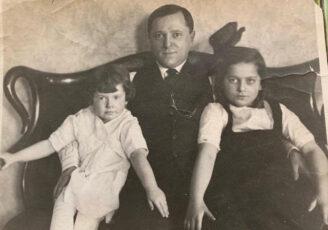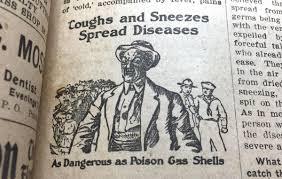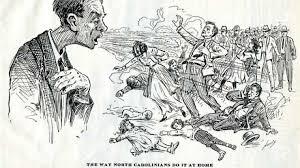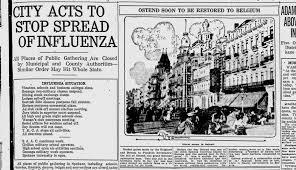Results: The white scarf on the door: a life-saving lesson from the 1918 Spanish flu
Published on 04/03/2020
(Source: Statnews.com - Kara Goldman) In 1918, a white scarf tied to the door of Elinor Elisberg Millers family’s apartment on the North Side of Chicago alerted the community to a virus residing within. Being only 3 years old, she was one of 500 million people worldwide — one-third of the planet’s population — who was infected with what came to be known as the Spanish influenza. It killed an estimated 50 million people.

QUESTIONS
GO to COMMENTS
Comments
1.
1.
She was quarantined in her room, unable to communicate with the outside world. Her parents and older sister stayed in their apartment, heeding city-wide warnings to avoid exposing others in their community to the disease. She could later recall with eerie detail the isolation and the fear, and the image burned into her brain of coffins passing by her window. Neighbors who were healthy one day were dead the next. The huge difference with this new coronavirus is that people seem to be able to get other infected for a long time before they even know they are infected. Did you hear about the Spanish flu before this survey?

Yes
80%
1990 votes
No
20%
513 votes
2.
2.
Elinor Elisberg Miller survived. She went to college at Northwestern University. She was fascinated by microbiology, likely influenced by her early experiences. She became a biology teacher in Chicago public high schools — though had she grown up a few decades later I'm certain she would have been a doctor. She married a wonderful man, had three children, celebrated the births of three granddaughters, lived to dote on four great-grandkids, celebrated her 100th birthday with beer and hundreds of her closest friends, and passed peacefully at nearly 103 years of age. Considering social isolation was a crucial fact to control the virus, and still seems to be, do you consider people take social isolation seriously enough?

Yes
20%
502 votes
No
60%
1505 votes
Undecided
20%
496 votes
3.
3.
Fast forward to 2020. As Miller's granddaughter, a physician living with —and working within — today's pandemic, her story is compelling and relevant. The average mortality rates for the two pandemics seem to be similar: 2.5% during the 1918 Spanish Flu and between 1.5% and 3% from early estimates of Covid-19. At least for now, the average speed of disease progression appears slower with Covid-19. The author's grandmother recalled hearing countless stories of healthy individuals who went to work in the morning and never came home. Something similar was heard from some people in China when this started. There are some trends suggesting social isolation is not the solution, but letting most of the population get exposed and infected, even if that causes a lot of deaths. If there was no other way out, which one would you prefer to deal with?

Social isolation
88%
2192 votes
Let the virus spread to reach 60% of the population and get immunization
12%
311 votes
4.
4.
Some scientists insist saying that the push for a quick coronavirus vaccine could backfire. They say that a vaccine that has not been properly tested could make people sicker. There are many examples with serious side effects like HN1N1 flu in 2009, 1976 swine flu, etc. I am pro vaccines, but I am a bit afraid of getting one that can produce side effects for not being properly tested during 12-18 months as it is expected. If there was no other choice, what would you prefer?

A vaccine as soon as possible, with unknown side effects
29%
717 votes
Waiting for a safer vaccine tested during 12 to 18 months
71%
1786 votes
COMMENTS


